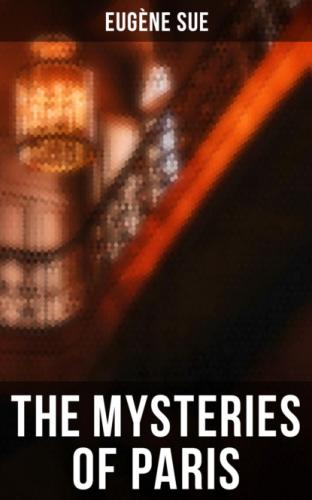Eugène Sue
The Mysteries of Paris
All 6 Volumes
Published by
Books
- Advanced Digital Solutions & High-Quality eBook Formatting -
2020 OK Publishing
EAN 4064066394370
Table of Contents
Volume 1
Table of Contents
CHAPTER III. HISTORY OF LA GOUALEUSE.
CHAPTER IV. THE CHOURINEUR'S HISTORY.
CHAPTER VI. THOMAS SEYTON AND THE COUNTESS SARAH.
CHAPTER VII. "YOUR MONEY OR YOUR LIFE."
CHAPTER X. CASTLES IN THE AIR.
CHAPTER XI. MURPHY AND RODOLPH.
CHAPTER XIV. THE BLEEDING HEART.
CHAPTER XXII. HISTORY OF DAVID AND CECILY.
CHAPTER XXIII. A HOUSE IN THE RUE DU TEMPLE.
CHAPTER XXIV. THE FOUR STORIES.
CHAPTER I.
THE TAPIS-FRANC.[1]
It was on a cold and rainy night, towards the end of October, 1838, that a tall and powerful man, with an old broad-brimmed straw hat upon his head, and clad in a blue cotton carter's frock, which hung loosely over trousers of the same material, crossed the Pont au Change, and darted with a hasty step into the Cité, that labyrinth of obscure, narrow, and winding streets which extends from the Palais de Justice to Notre Dame.
Although limited in space, and carefully watched, this quarter serves as the lurking-place, or rendezvous, of a vast number of the very dregs of society in Paris, who flock to the tapis-franc. This word, in the slang of theft and murder, signifies a drinking-shop of the lowest class. A returned convict, who, in this foul phraseology, is called an "ogre," or a woman in the same degraded state, who is termed an "ogress," generally keep such "cribs," frequented by the refuse of the Parisian population; freed felons, thieves, and assassins are there familiar guests. If a crime is committed, it is here, in this filthy sewer, that the police throws its cast-net, and rarely fails to catch the criminals it seeks to take.
On the night in question, the wind howled fiercely in the dark and dirty gullies of the Cité; the blinking and uncertain light of the lamps which swung to and fro in the sudden gusts were dimly reflected in pools of black slush, which flowed abundantly in the midst of the filthy pavement.
The murky-coloured houses, which were lighted within by a few panes of glass in the worm-eaten casements, overhung each other so closely that the eaves of each almost touched its opposite neighbour, so narrow were the streets. Dark and noisome alleys led to staircases still more black and foul, and so perpendicular that they could hardly be ascended by the help of a cord fixed to the dank and humid walls by holdfasts of iron.
Stalls of charcoal-sellers, fruit-sellers, or venders of refuse meat occupied the ground floor of some of these wretched abodes. Notwithstanding the small value of their commodities, the fronts of nearly all these shops were protected by strong bars of iron—a proof that the shopkeepers knew and dreaded the gentry who infested the vicinity.
The man of whom
